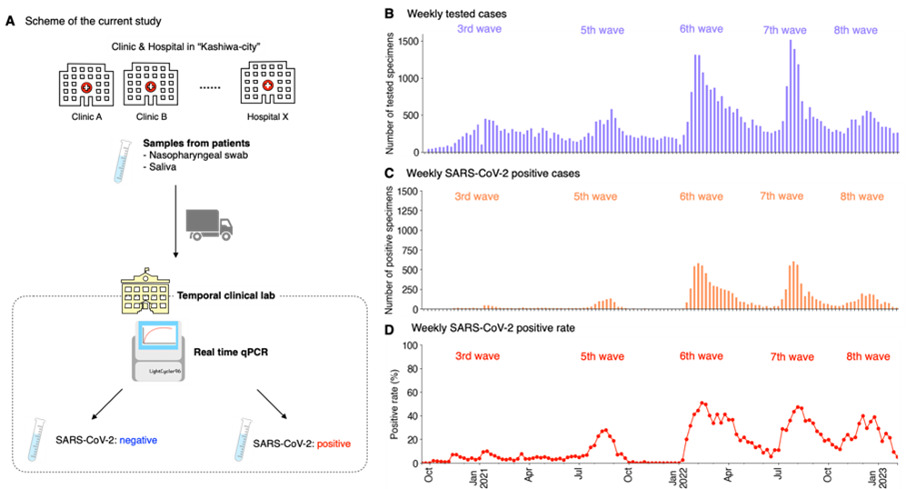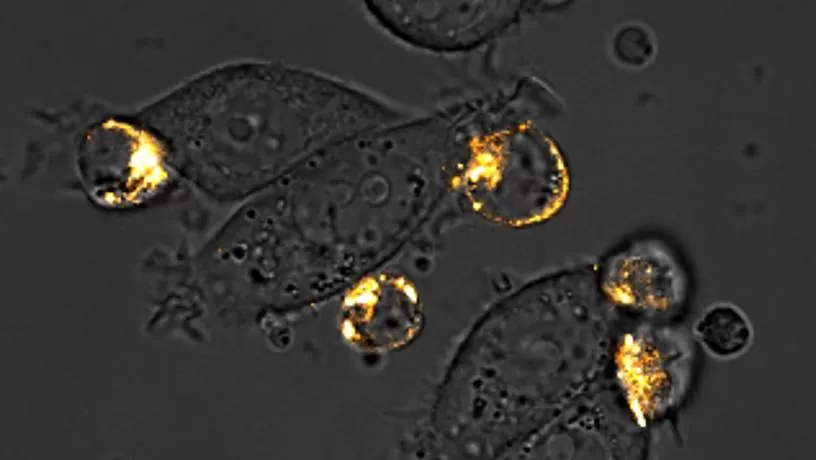2023-10-12 カロリンスカ研究所(KI)
◆RNAシーケンシング技術を使用して、3百万を超える個々の細胞核を分析し、脳の構造と発達を詳細に調査しました。これにより、疾患の理解と治療法の開発に寄与する可能性があります。
◆研究者たちは、脳の多くの細胞が脳幹に存在し、感覚反射、恐怖、攻撃、性行動などの生得的行動を制御する可能性があると指摘しています。また、この研究は、脳腫瘍の研究にも応用可能で、新しい治療法の発見につながる可能性があるとされています。
<関連情報>
- https://news.ki.se/cell-atlases-of-the-human-brain-presented-in-science
- https://www.science.org/doi/10.1126/science.add7046
- https://www.science.org/doi/10.1126/science.adf1226
ヒト成人脳における細胞タイプのトランスクリプトーム多様性 Transcriptomic diversity of cell types across the adult human brain
Kimberly Siletti,Rebecca Hodge,Alejandro Mossi Albiach,Ka Wai Lee,Song-Lin Ding,Lijuan Hu ,Peter Lönnerberg,Trygve Bakken,Tamara Casper,Michael Clark,Nick Dee,Jessica Gloe,Daniel Hirschstein,Nadiya V. Shapovalova,C. Dirk Keene,Julie Nyhus,Herman Tung,Anna Marie Yanny,Ernest Arenas ,Ed S. Lein ,and Sten Linnarsson
Science Published:13 Oct 2023
DOI:https://doi.org/10.1126/science.add7046
Structured Abstract
INTRODUCTION
The mammalian brain comprises billions of neurons and glia capable of executing highly complex behaviors. These cells are organized into several major functional regions with distinct developmental origins. Although the cerebral cortex is the most well studied because of its role in cognition, the other regions are no less essential. In the past several years, single-cell genomic methods have revolutionized our understanding of the brain’s cellular diversity, revealing hundreds of transcriptomic cell types across the mouse brain. Prior work has shown that transcriptional cell types can be aligned with other modalities—e.g., electrophysiology, morphology, and connectivity—as well as across large evolutionary distances. However, the human brain has not been comprehensively surveyed, and few regions outside the cerebral cortex have been profiled. Thus, the overall number, distribution, and region-specificity of human neurons and glia remain unknown.
RATIONALE
As a first step toward a brain-wide census of cell types, we used single-nucleus RNA sequencing to profile cells sampled from throughout the entire human brain. We isolated postmortem tissue from three donors and enriched for neurons from approximately 100 locations across the forebrain (the cerebral cortex, hippocampus, cerebral nuclei, hypothalamus, and thalamus), midbrain, and hindbrain (the pons, medulla, and cerebellum). The final dataset comprised more than three million cells, including more than two million neurons, which we clustered iteratively into 31 superclusters, 461 clusters, and 3313 subclusters. This top-down approach enabled us to examine and compare heterogeneity within and across cell classes and regions.
RESULTS
Neurons varied extensively across brain regions. Many neuronal superclusters comprised cells mainly localized to specific brain regions. Cell states moreover broadly mirrored their developmental history. For example, several superclusters distributed across the telencephalon—the developmental compartment that produces the cortex, hippocampus, and cerebral nuclei. Cortical clusters comprised layer-specific excitatory neurons as well as distinct inhibitory interneurons with distinct developmental origins. Other superclusters reflected cellular migration during development, including midbrain-derived inhibitory neurons located in the thalamus, which transcriptionally aligned with midbrain neurons.
Within regions, neuronal subtypes were not distributed according to simple rules. Dissections differed from one another according to both specific cell types and cell type proportions. Notably, neurons were particularly diverse outside the cortex. The hypothalamus, midbrain, and hindbrain contained markedly high neuronal heterogeneity, consistent with their diverse functions. These neurons were also organized less hierarchically compared with cortical neurons: Many belonged to a single supercluster that uniquely contained both inhibitory and excitatory neurons along with serotonergic and dopaminergic neurons. These neurons combinatorially expressed many neurotransmitters and neuropeptides.
Glia also varied across brain regions, and their diversity similarly reflected development. In particular, both astrocytes and oligodendrocyte precursors formed two major groups enriched within and outside the telencephalon. By contrast, mature oligodendrocytes exhibited two major types found across the entire brain. However, these oligodendrocyte types existed in different proportions inside and outside the telencephalon, which suggests that even the relatively homogeneous oligodendrocyte lineage exhibits regional variation.
CONCLUSION
Our findings suggest that each brain area contains a specific complement of cell types and states, which implies that a complete characterization of cell types will require deep tissue sampling, particularly outside the cortex. The telencephalon appears unique with respect to other brain regions, across both neurons and glial cells, whereas the brainstem comprises an extremely diverse set of neurons that may support innate behaviors. These observations have implications for a range of human diseases that exhibit regional variation, including cancer and neurodegenerative disease. Our work therefore provides a basis for exploring the role of neuroepithelial diversity in human health and disease.

Cellular diversity across the entire human brain.
Approximately 100 anatomical locations were dissected from the human brain in three donors followed by single-nucleus RNA sequencing (left). Three levels of clustering revealed the cell type composition of the human brain (center). Whereas cortical neurons varied more gradually, brainstem neurons were unexpectedly diverse with a large number of small clusters indicating distinct cell types organized by combinatorial gene expression (right). Although less heterogeneous than neurons, glial cells, such as astrocytes and oligodendrocyte precursors, also differed between the cortex and the brainstem (right).
Abstract
The human brain directs complex behaviors, ranging from fine motor skills to abstract intelligence, but the diversity of cell types that support these skills has not been fully described. In this work, we used single-nucleus RNA sequencing to systematically survey cells across the entire adult human brain. We sampled more than three million nuclei from approximately 100 dissections across the forebrain, midbrain, and hindbrain in three postmortem donors. Our analysis identified 461 clusters and 3313 subclusters organized largely according to developmental origins and revealing high diversity in midbrain and hindbrain neurons. Astrocytes and oligodendrocyte-lineage cells also exhibited regional diversity at multiple scales. The transcriptomic census of the entire human brain presented in this work provides a resource for understanding the molecular diversity of the human brain in health and disease.
発達中のヒト脳の包括的細胞アトラス Comprehensive cell atlas of the first-trimester developing human brain
Emelie Braun,Miri Danan-Gotthold,Lars E. Borm,Ka Wai Lee,Elin Vinsland,Peter Lönnerberg,Lijuan Hu,Xiaofei Li,Xiaoling He,Žaneta Andrusivová,Joakim Lundeberg,Roger A. Barker,Ernest Arenas,Erik Sundström,and Sten Linnarsson
Science Published:13 Oct 2023
DOI:https://doi.org/10.1126/science.adf1226
Structured Abstract
INTRODUCTION
The adult human brain is divided into hundreds of spatial domains, each comprising tens or hundreds of distinct neuronal, glial, and other cell types. This complex arrangement of cells is initially established during the first trimester of development, yet the difficulty of accessing such early embryos has hindered detailed molecular analysis. Dissecting the spatial, temporal, and transcriptional changes that occur in the whole brain during the first trimester promises to reveal the fundamental blueprint of the human brain.
RATIONALE
To comprehensively map brain cell types and gene expression trajectories during the first trimester, we collected 26 brain specimens spanning 5 to 14 postconceptional weeks (pcw) that were dissected into 111 distinct biological samples. Each of these samples was subjected to single-cell RNA sequencing, resulting in a collection of 1,665,937 high-quality single-cell transcriptomes. These data were complemented by a spatial transcriptomic analysis at 5 pcw using highly multiplexed RNA fluorescence in situ hybridization (FISH) and spatial transcriptomics. We identified 616 clusters, which we annotated with metadata, including class and subclass, spatial location, embryonic age distribution, and specific gene expression markers.
RESULTS
The detailed resolution of the dataset allowed us to characterize general principles of brain development as well as delineate the differentiation trajectories of several brain regions. The developing excitatory neuron lineages in the neocortex revealed three different ongoing molecular programs: differentiation from radial glia to neurons, cell cycle, and maturation. We found a delicate balance between progenitor and differentiation factors in intermediate progenitor cells (IPCs), with the induction of neurogenic transcription factors visible after the G1 cell cycle phase. Our findings support a conserved progressive transcriptional maturation in older specimens. Many genes were induced in late radial glia and glioblasts, making up a program that drives progenitors toward neurogenesis as well as gliogenesis. In the forebrain γ-aminobutyric acid–mediated (GABAergic) neuronal lineage, we found evidence of migration of CRABP-expressing cells from the medial ganglionic eminence into the thalamus, which are predicted to give rise to thalamic PVALB+ neurons in the adult. Examining ventral midbrain development, we found a diverse set of progenitors already arising at 8 pcw, defining broad TH class identity, although adult TH subtype identities must arise after 14 pcw. Focusing on developing glia, we found a large set of region-specific glioblasts, of which most showed evidence of maturation into astrocytes. This provides a plausible mechanism for the specification of adult region-specific astrocyte types. We further identified oligodendrocyte precursor cells (OPCs) specific to the forebrain, midbrain, and hindbrain that expressed large numbers of functionally conserved genes.
CONCLUSION
Although previous studies have explored specific regions of the brain during development, this is the first known comprehensive study of the whole human brain during the crucial first trimester. We found that although neurons were the most diverse, both pre-astrocytes and OPCs were regionally distinct, and their gene expression suggests region- and cell type–specific supportive functions. These findings highlight the importance of early patterning events and provide a rich resource for the interpretation of the many brain disorders that show region-specific patterns of occurrence or severity and for identifying therapeutic targets for human disorders that affect specific brain cell populations.

Atlas of the developing human brain.
We studied the human brain using single-cell RNA sequencing from 5 to 14 pcw and multiplexed in situ RNA detection at 5 pcw. Our findings reveal how early patterning events establish the organization of the future brain and how maturation and differentiation trajectories are superimposed on this basic plan to generate the extraordinary complexity of the adult nervous system.
Abstract
The adult human brain comprises more than a thousand distinct neuronal and glial cell types, a diversity that emerges during early brain development. To reveal the precise sequence of events during early brain development, we used single-cell RNA sequencing and spatial transcriptomics and uncovered cell states and trajectories in human brains at 5 to 14 postconceptional weeks (pcw). We identified 12 major classes that are organized as ~600 distinct cell states, which map to precise spatial anatomical domains at 5 pcw. We described detailed differentiation trajectories of the human forebrain and midbrain and found a large number of region-specific glioblasts that mature into distinct pre-astrocytes and pre–oligodendrocyte precursor cells. Our findings reveal the establishment of cell types during the first trimester of human brain development.


